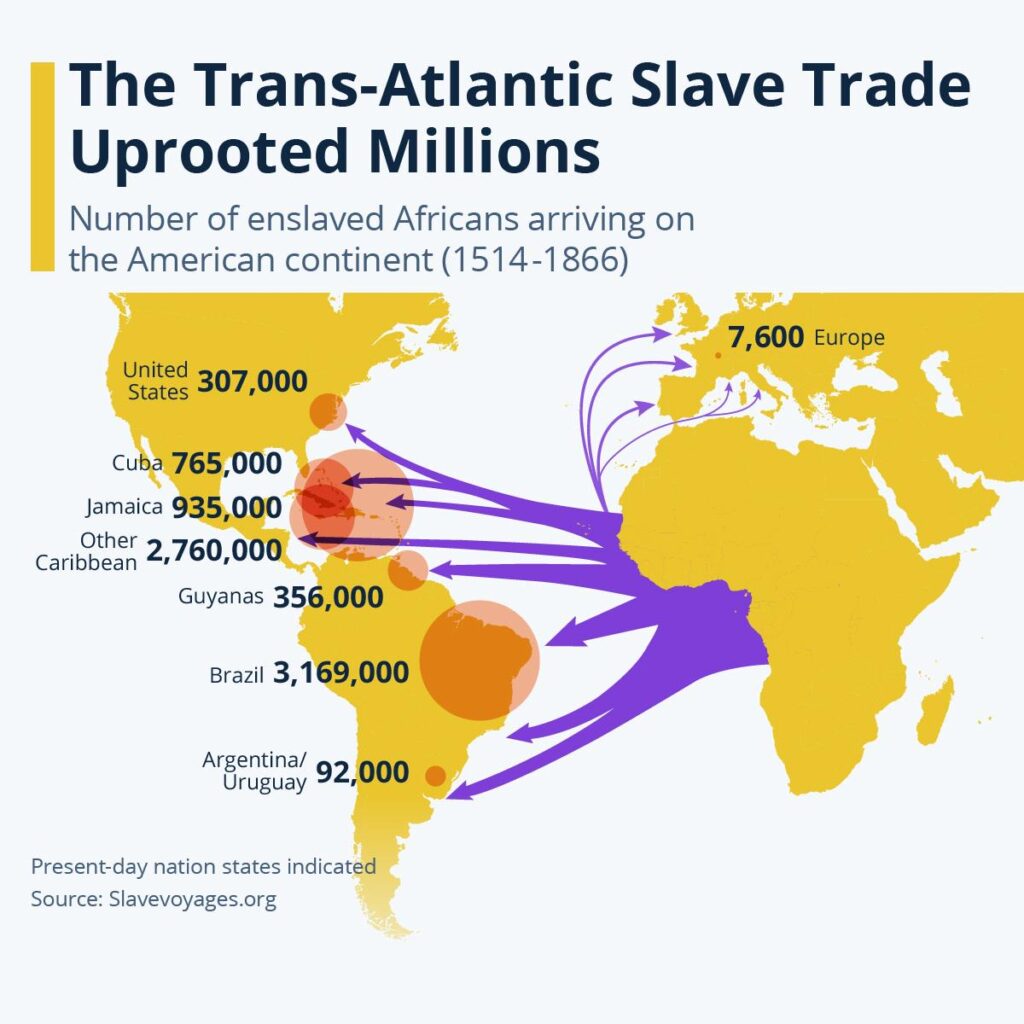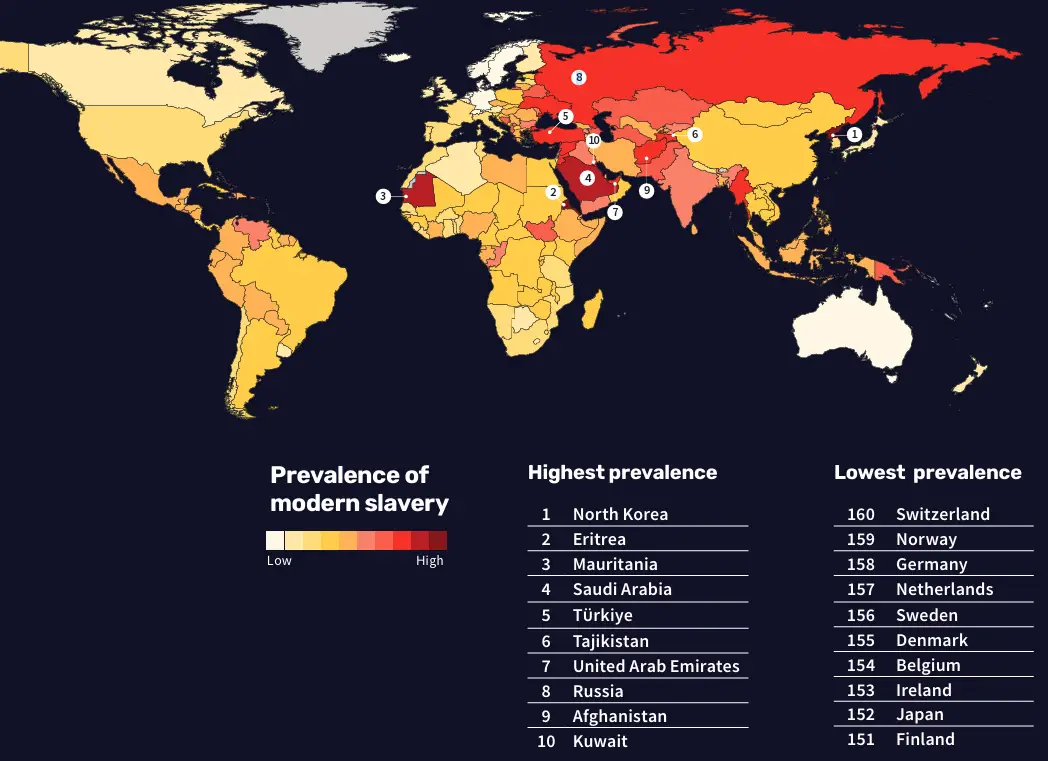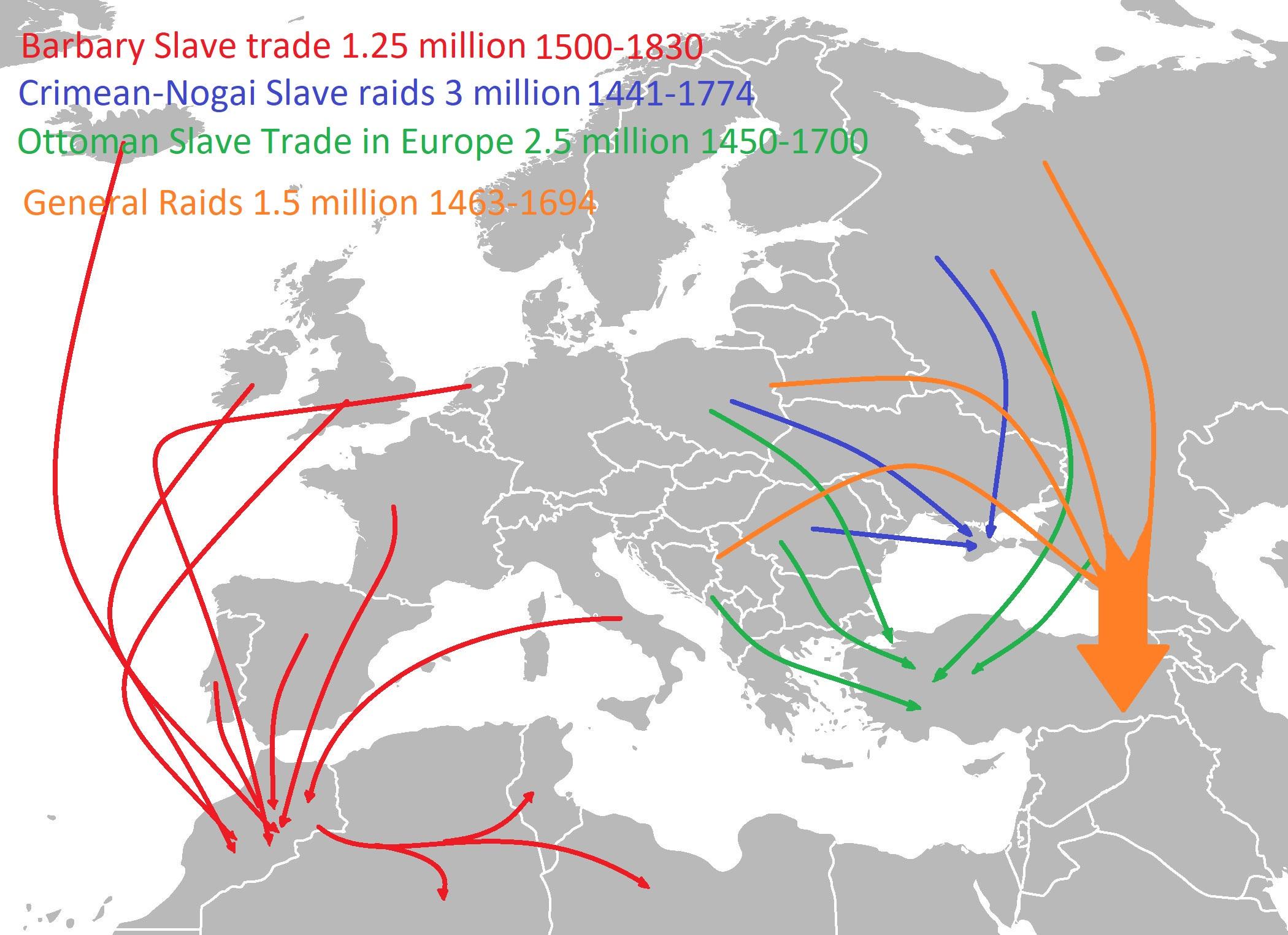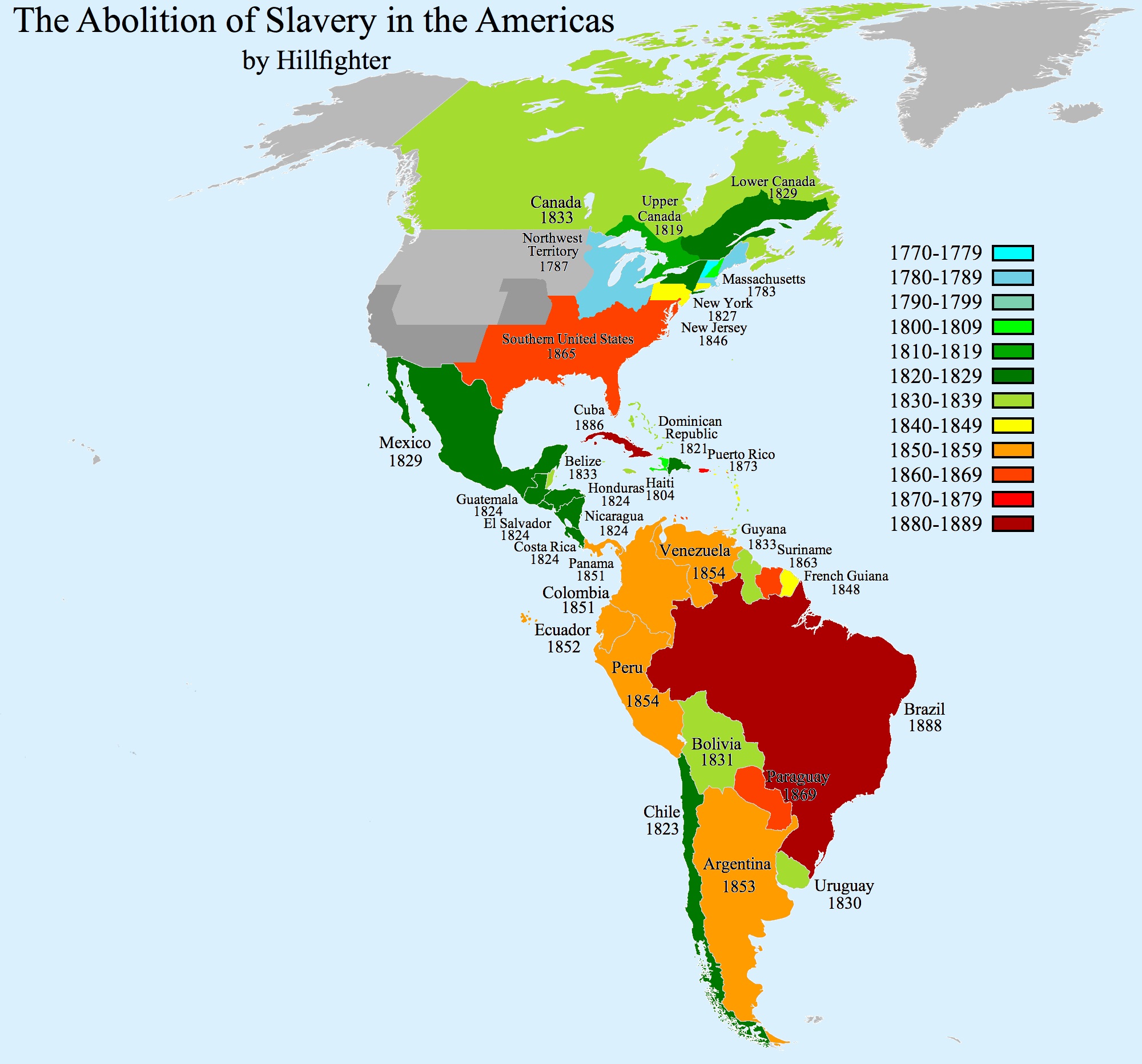The Trans-Atlantic Slave Trade: A Dark Passage in Human History
When we think of one of the greatest atrocities in human history, the transatlantic slave trade stands as a defining example. For over 400 years, from the early 16th century to the late 19th century, millions of Africans were forcibly taken from their homelands and shipped across the ocean in brutal conditions to work on plantations in the Americas. This was not just a trade—it was a system of unimaginable suffering and exploitation that profoundly shaped the modern world.
The map below created by Reddit user wassim_wsm using shows slavevoyages.org data shows the trans-Atlantic slave trade.

The Scale of the Trade: A Staggering Human Toll
Historians estimate that between 12 and 15 million Africans were enslaved and shipped to the Americas between the early 1500s and the late 1800s. However, this figure only accounts for those who survived the brutal voyage known as the Middle Passage. Millions more died during raids, transport, or captivity before even reaching the ships.
- Portugal and Britain were the largest slave-trading nations, accounting for over 70% of the total trade.
- The majority of enslaved Africans were taken to Brazil (5.5 million), the Caribbean (nearly 5 million), and North America (around 400,000).
The Middle Passage: A Journey of Horror
The Middle Passage was a horrific transoceanic voyage where enslaved Africans were packed into the cargo holds of ships like goods, enduring unimaginable suffering.
- Mortality rates ranged from 10% to 20% per voyage, meaning over 1.8 million people died at sea.
- Ships were overcrowded, disease spread rapidly, and many captives perished from dysentery, starvation, or abuse.
- Some captains threw sick or rebellious enslaved people overboard to claim insurance money, as infamously seen in the Zong Massacre of 1781.
Who Was Involved? A Global Trade
The transatlantic slave trade was a vast international enterprise driven by economic greed. It involved multiple players:
- European Powers – Portugal, Britain, France, Spain, and the Netherlands dominated the trade, establishing networks of slave forts along Africa’s coast.
- African Kingdoms & Traders – Some African rulers and merchants participated by selling prisoners of war, criminals, or captives from rival communities in exchange for European goods.
- The Americas – The demand for enslaved labor was highest in sugar, cotton, and tobacco plantations, especially in Brazil and the Caribbean.
This economic system became known as the Triangular Trade, in which:
- European goods (textiles, firearms, alcohol) were traded for enslaved Africans.
- Enslaved Africans were transported to the Americas and forced into labor.
- Raw materials (sugar, tobacco, cotton) were shipped to Europe, fueling industrial growth.
Life in Bondage: The Harsh Reality of Slavery
Enslaved Africans who survived the Middle Passage were forced into lifelong labor under brutal conditions.
- On Plantations – Men, women, and children worked from dawn to dusk in fields, often under extreme punishment.
- At Auction Blocks – Families were routinely separated, with people sold like livestock.
- Under Oppressive Laws – Slaves were legally considered property, with no rights or freedoms.
Despite these horrors, enslaved Africans resisted through uprisings, escape, sabotage, and the preservation of cultural traditions that shaped modern African diaspora communities.
The End of the Trade: Abolition & Resistance
The transatlantic slave trade did not collapse on its own—it was dismantled through centuries of resistance, rebellion, and activism.
- Revolts & Uprisings – The Haitian Revolution (1791–1804) was the first successful slave uprising, leading to Haiti’s independence and inspiring abolitionist movements worldwide.
- Abolitionist Movements – Figures like Olaudah Equiano, Frederick Douglass, and William Wilberforce campaigned to end the trade. Britain abolished the slave trade in 1807, followed by the U.S. in 1808, though slavery itself continued.
- Final Abolition – The last country in the Americas to outlaw slavery was Brazil in 1888.
The Lasting Legacy of the Transatlantic Slave Trade
The effects of this trade did not end with its abolition. Its legacy still influences societies today:
- The African Diaspora – Millions of people across the Americas trace their ancestry to enslaved Africans, shaping music, cuisine, and traditions.
- Racial Inequality – The economic and social structures created by slavery led to systemic racism, segregation, and disparities that persist today.
- Economic Consequences – The wealth accumulated through slavery helped finance Europe’s industrial revolution, while Africa suffered from depopulation and economic disruption.
Final Thougths
The transatlantic slave trade was not just a tragic chapter in history—it was a defining force that shaped the modern world. Understanding its history is essential to addressing its lasting impact.
What lessons can we take from this history? Share your thoughts below.








